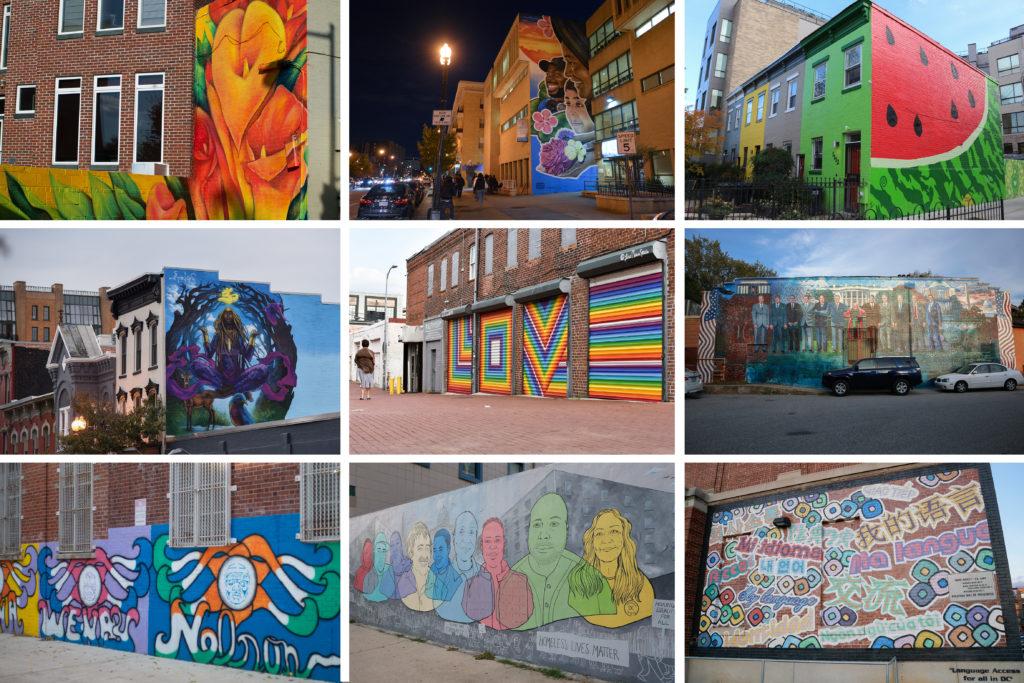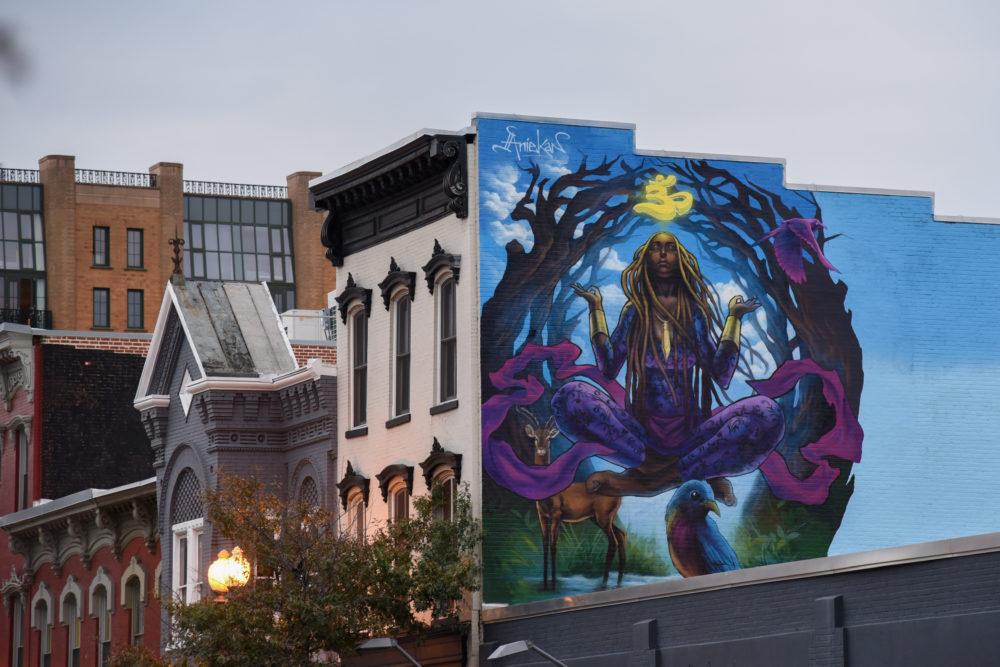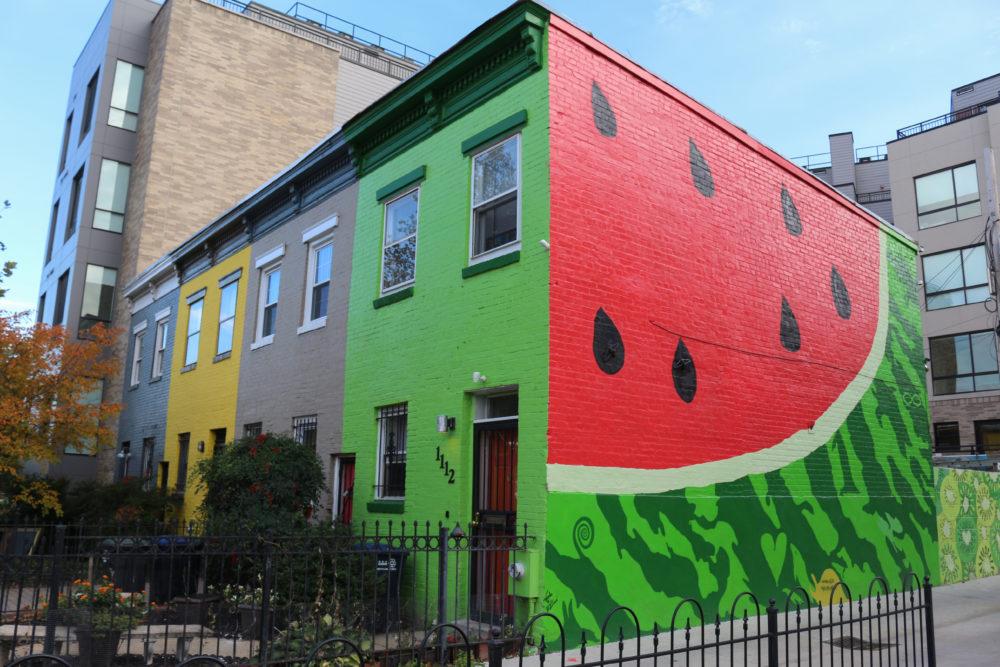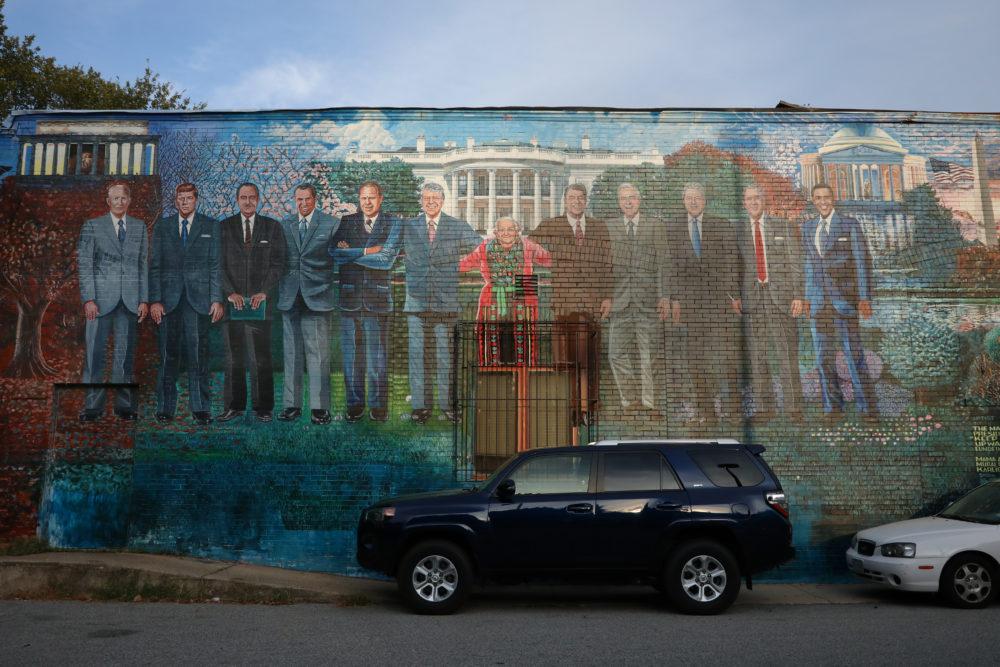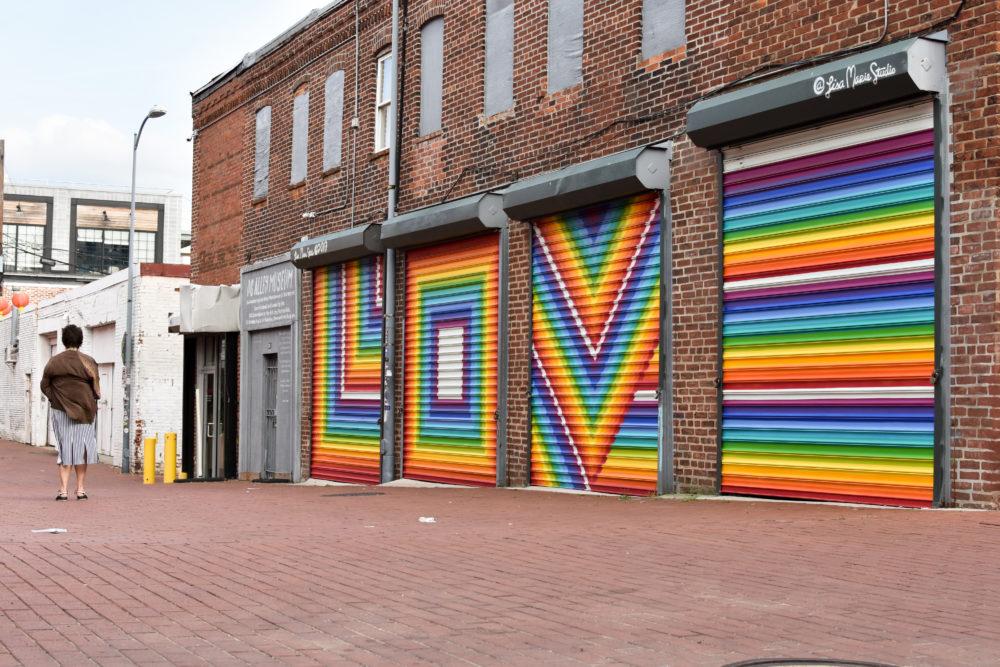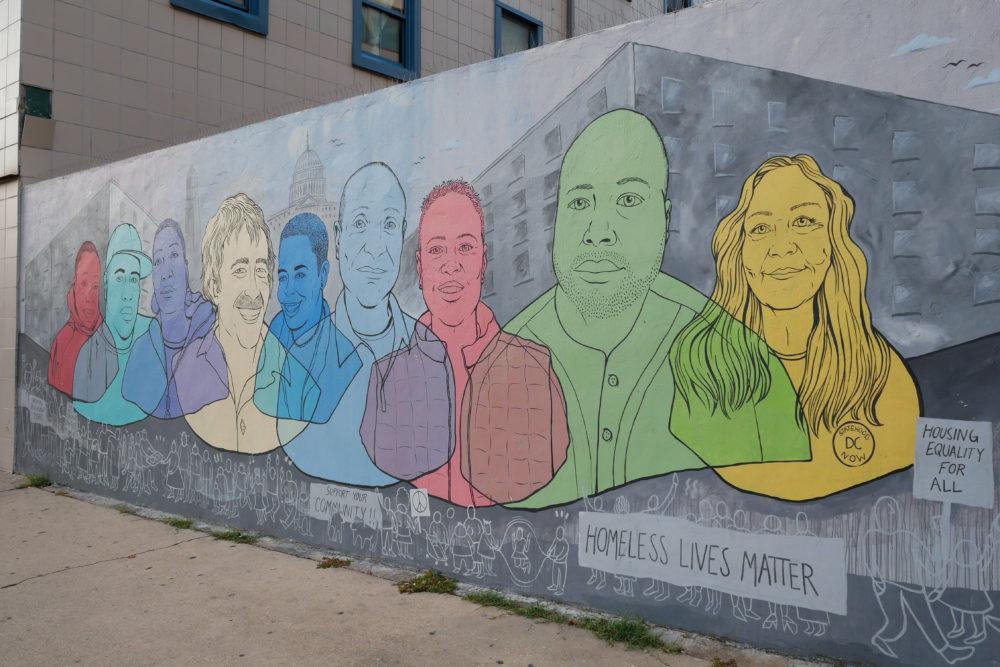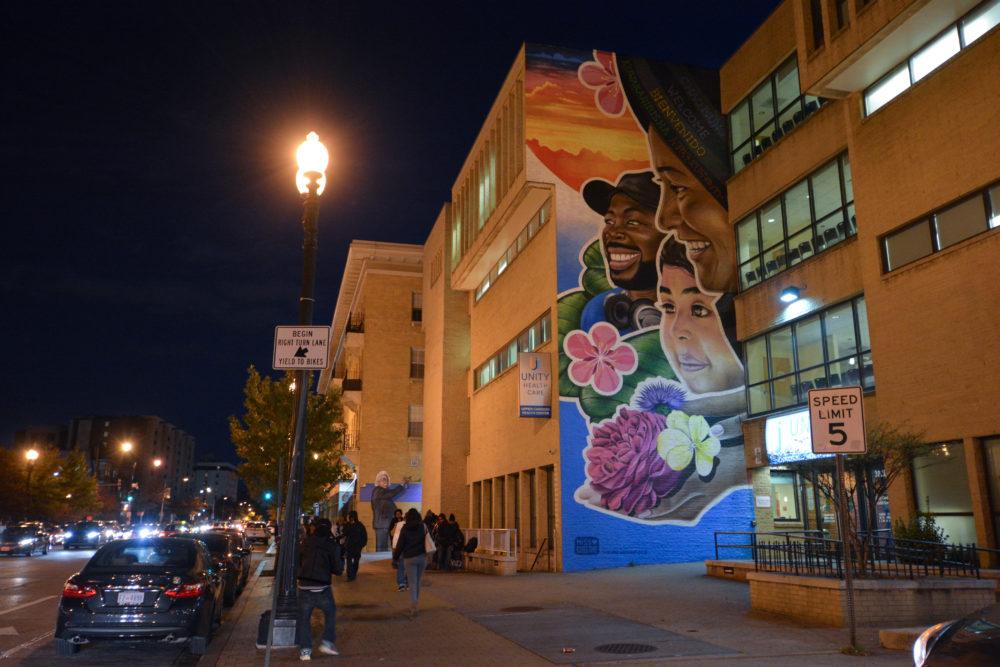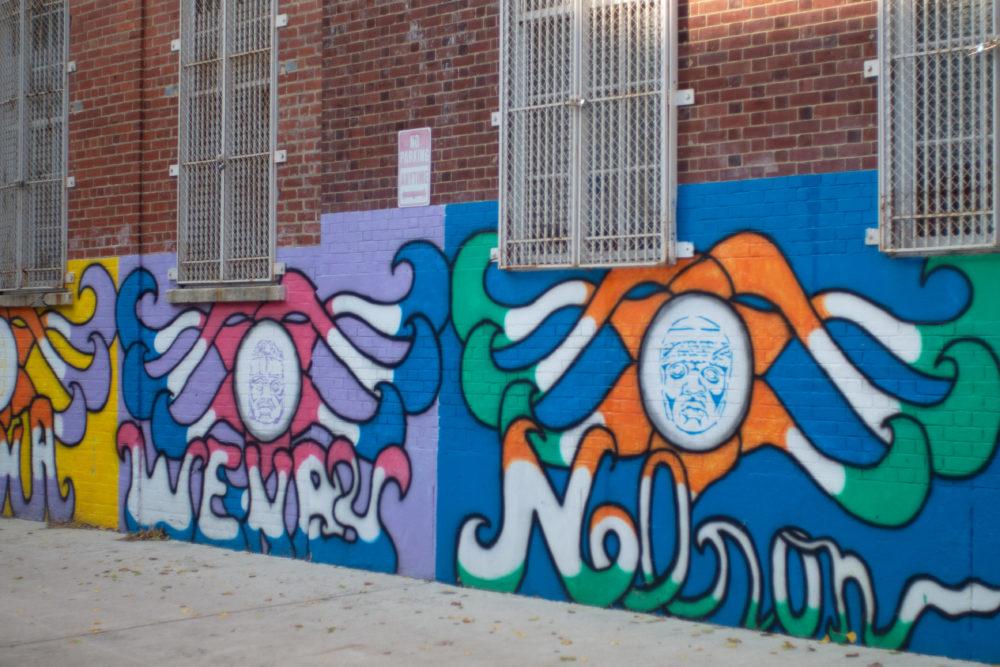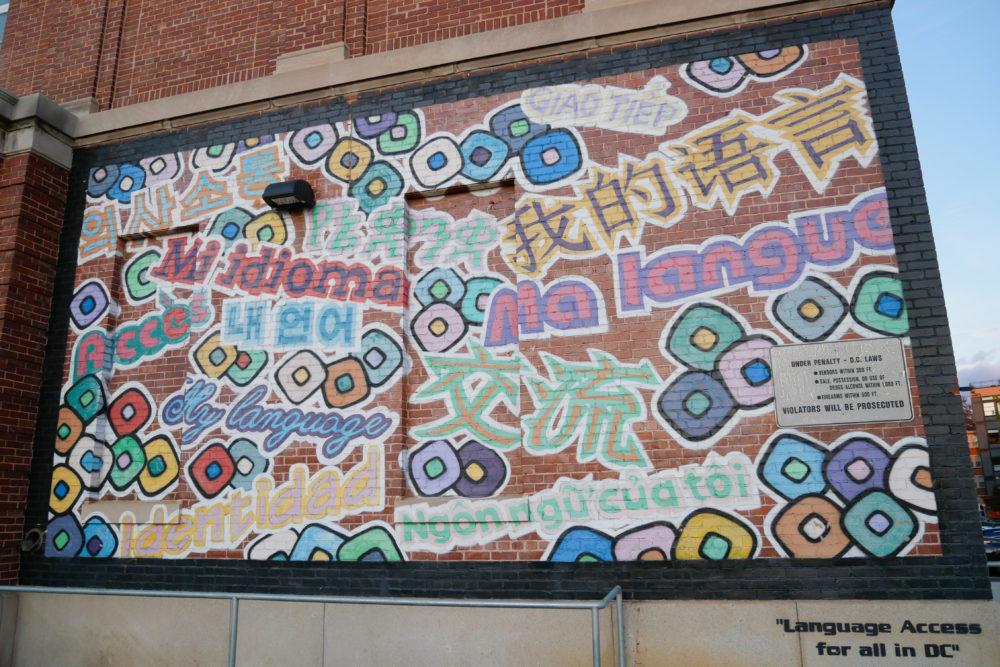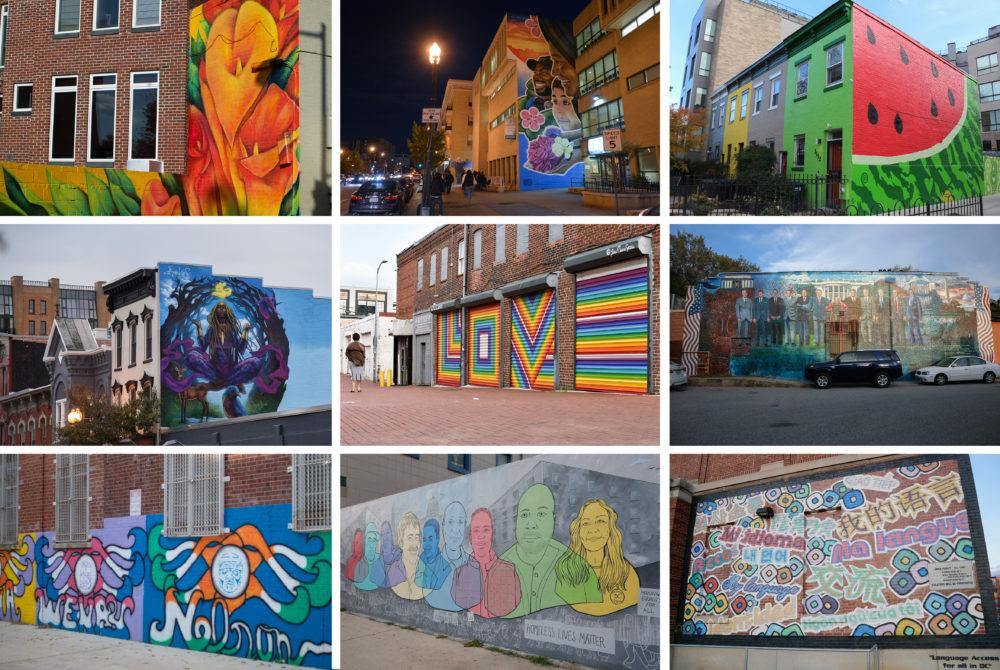Kaliq Crosby talks about the inspiration and work behind “Calla Lily” at 1300 Park Road NW.
When Kaliq Crosby stumbled upon a mural painted at 3400 13th St. NW, he said it was “falling apart.”
Crosby said he wanted to give the wall a do-over, painting it in yellow and inviting children from around the city to help complete the mural now known as “Calla Lily” on the side of Addis Park Market. The 17-by-11-foot mural depicts a calla lily – the country flower of Ethiopia – using the red, yellow and green colors of the Ethiopian flag to honor the grocery store owners who are Ethiopian.
“It represents peace,” Crosby said. “We wanted to bring it into the community to connect them to the community more, just to give a really beautiful, vibrant look to it and something that represented unity and peace during these times where we’re having a lot of trouble with that.”
Crosby said the process took about three weeks to complete, finishing the project in late August with the help of local youth who learned about the process of creating a mural from the sketching to painting stages. He said he wants the mural to engage onlookers who can stop and admire the piece on their way to and from work.
“I just want them to leave with a sense of happiness and joy,” he said. “That’s really what I wanted to do was kind of brighten up the scene, brighten up this intersection and just give people something beautiful to look at that they can start conversations with one another.”
The mural was commissioned by the MuralsDC program, a project funded by the D.C. Department of Public Works designed to prevent graffiti, in cooperation with the D.C. Commission on the Arts and Humanities, according to the program’s website.
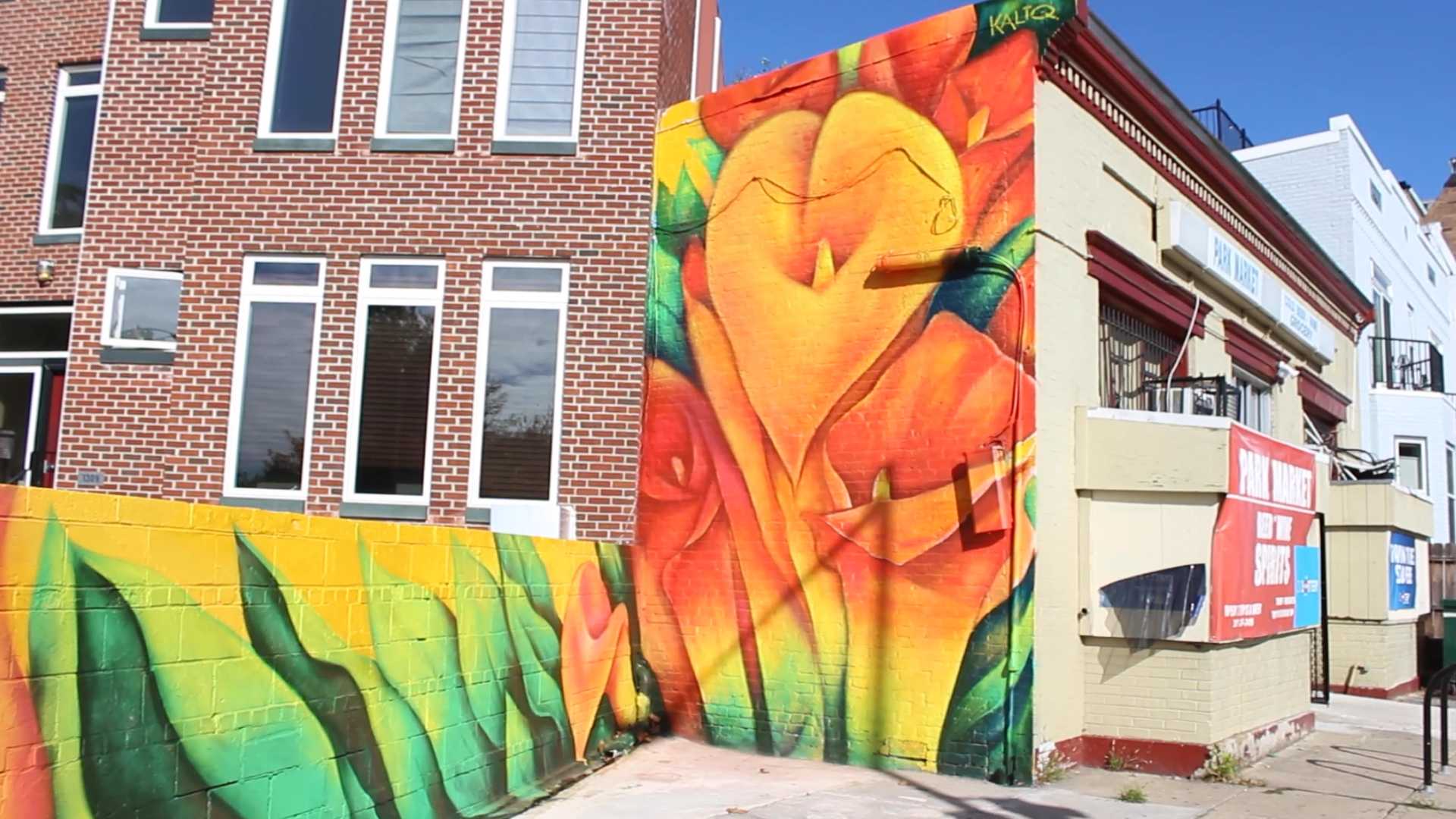
Media Credit: Sabrina Godin
Crosby said he did not know the shop owners before the project. The pairing came together once the shop owners applied to have a mural painted on their store through the D.C. Commission on the Arts and Humanities. Crosby was matched to the location after he applied to the MuralsDC program with a packet of his previous work and references.
Crosby said he always wanted to be a muralist. He said he started off doing smaller projects in people’s homes, like children’s rooms or “man caves,” and boutiques and salons before applying for larger murals.
He said he has also painted portraits, children’s books and clothing using airbrush painting techniques. Crosby has painted “a little bit of everything,” from cars and motorcycles to portraits.
“I paint cars, I paint motorcycles, almost any surface,” he said. “I try to do a little bit of everything.”
Story by Rachel Armany


